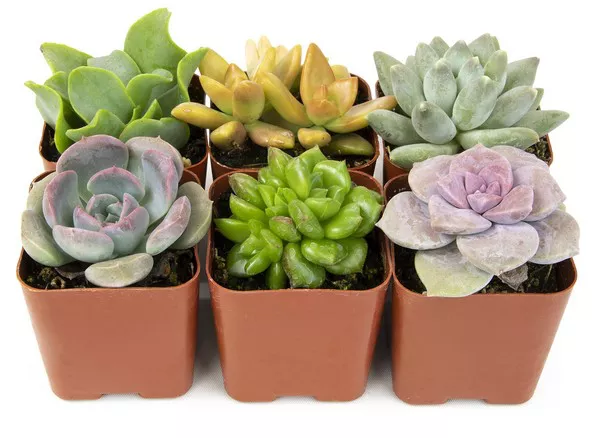Succulents, with their captivating shapes and textures, have become a staple in modern interior and exterior design. Whether adorning windowsills, tabletops, or outdoor gardens, succulents add a touch of natural beauty to any space. However, mastering the art of succulent placement goes beyond simply placing them in a pot. In this comprehensive guide, we will explore various techniques and considerations for positioning succulents to create stunning displays that enhance both aesthetics and plant health.
Understanding Light Requirements
Light is one of the most critical factors influencing the health and growth of succulents. As plants adapted to arid environments, succulents thrive in bright, indirect sunlight. When selecting a location for your succulents, consider the amount of natural light available throughout the day. South-facing windows typically receive the most sunlight, making them ideal for succulents that require high light levels, such as Echeveria and Haworthia varieties.
For succulents with lower light requirements, such as certain types of Aloe and Sansevieria, east or west-facing windows may provide sufficient light without the risk of sunburn. It’s essential to monitor sunlight exposure and adjust the placement of your succulents accordingly, especially during the intense afternoon sun. Avoid placing succulents too close to windows or glass surfaces, as they can magnify sunlight and cause overheating or leaf damage.
Choosing Suitable Containers and Planters
The choice of containers and planters can significantly impact the overall aesthetic appeal of your succulent displays. When selecting containers for succulents, prioritize options with adequate drainage holes to prevent waterlogged soil and root rot. Porous materials such as terracotta or unglazed ceramic allow for better airflow and moisture regulation, promoting healthy root development.
Consider the size and shape of the container relative to the size of your succulents. Opt for shallow containers for succulents with shallow root systems, such as Sedum and Sempervivum varieties, while deeper pots may be more suitable for succulents with extensive root systems, like Agave and Aloe. Additionally, consider the color and texture of the containers to complement the foliage and enhance the visual appeal of your succulent arrangements.
See Also: How much water for a small succulent?
Creating Dynamic Arrangements
Succulents lend themselves beautifully to various arrangement styles, from minimalist displays to elaborate gardenscapes. When creating succulent arrangements, consider factors such as color, texture, and growth habits to achieve visually appealing compositions. Experiment with contrasting foliage colors and shapes to create depth and interest in your arrangements.
Vertical gardens or living walls offer a creative way to showcase succulents while maximizing space in small living areas or outdoor patios. Combine trailing succulents like String of Pearls (Senecio rowleyanus) with upright varieties such as Aeoniums and Crassula to create dynamic vertical displays. Alternatively, create a focal point with a large centerpiece succulent surrounded by smaller companions in a shallow dish or bowl.
Utilizing Repurposed Containers and Vertical Spaces
Succulents are incredibly versatile and can thrive in a variety of unconventional containers and vertical spaces. Explore repurposed items such as driftwood, old teacups, or vintage crates to add character and charm to your succulent displays. Vertical gardens made from pallets or trellises provide an excellent opportunity to showcase succulents while saving valuable floor space.
Vertical planters or hanging baskets offer another innovative way to incorporate succulents into your home or garden decor. Choose cascading varieties like Burro’s Tail (Sedum morganianum) or String of Bananas (Senecio radicans) to create a cascading effect and add visual interest to vertical arrangements. Ensure proper drainage and ventilation to prevent waterlogging and promote healthy growth in vertical succulent displays.
Considering Environmental Factors
Environmental factors such as temperature, humidity, and airflow play a significant role in the health and longevity of succulents. When placing succulents indoors, ensure adequate air circulation to prevent stagnant air and minimize the risk of fungal diseases. Open windows or use fans to promote airflow, especially in humid climates or enclosed spaces.
Additionally, be mindful of temperature fluctuations and drafts that can stress succulents and affect their growth. Avoid placing succulents near heating vents or air conditioning units, as sudden temperature changes can lead to leaf damage or wilting. Similarly, protect succulents from cold drafts during the winter months, especially if placed near windows or exterior doors.
Maintaining Proper Watering Practices
Proper watering is essential for the health and vitality of succulents, regardless of their placement. Succulents are adapted to arid environments and prefer infrequent but thorough watering to prevent root rot and other moisture-related issues. When watering succulents, thoroughly saturate the soil until water drains freely from the bottom of the container, then allow the soil to dry out completely before watering again.
Avoid overwatering, as succulents are susceptible to root rot in waterlogged conditions. Conversely, underwatering can lead to dehydration and wilting. Monitor soil moisture levels regularly and adjust your watering schedule based on environmental conditions, such as temperature and humidity. Consider using a moisture meter or conducting a fingertip test to gauge soil moisture accurately.
Conclusion
Placing succulents requires careful consideration of factors such as light, containers, arrangement styles, and environmental conditions to create visually stunning displays that thrive. By understanding the light requirements of different succulent species, choosing suitable containers, and creating dynamic arrangements, you can showcase the beauty of succulents in your home or garden. Experiment with repurposed containers, vertical spaces, and innovative planting techniques to add personality and charm to your succulent displays. Remember to maintain proper watering practices and monitor environmental factors to ensure the health and longevity of your succulents. With creativity and attention to detail, anyone can master the art of succulent placement and create captivating displays that inspire and delight.


